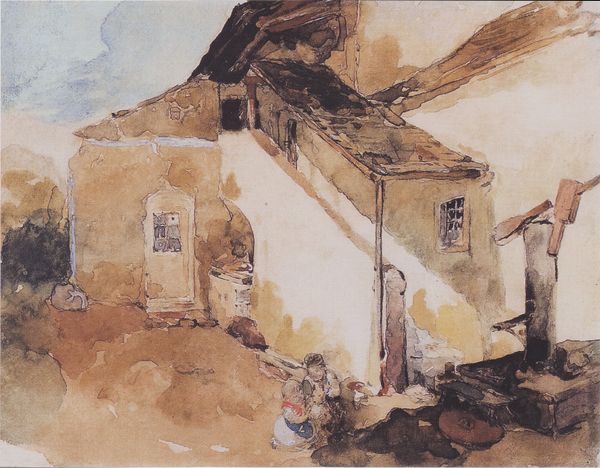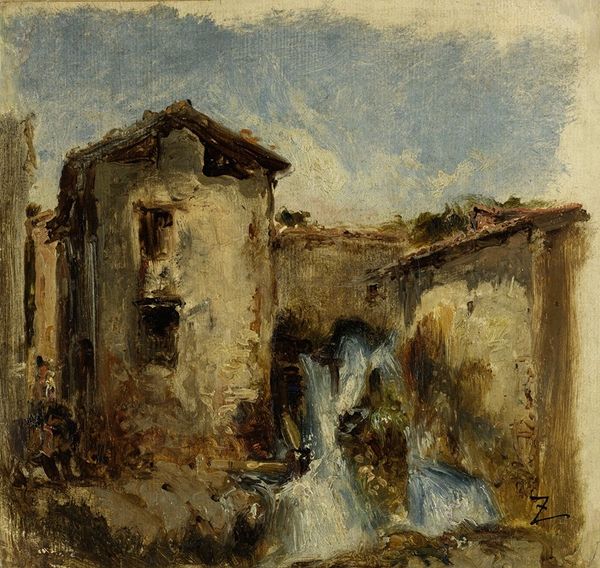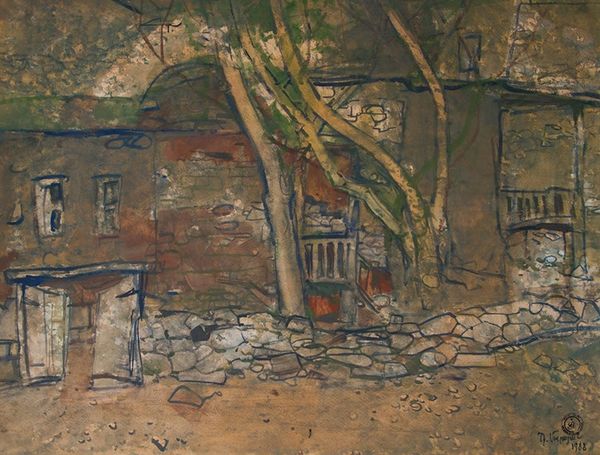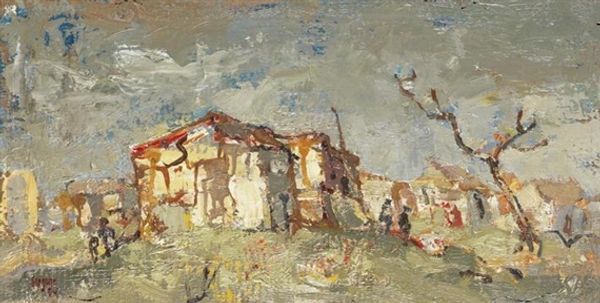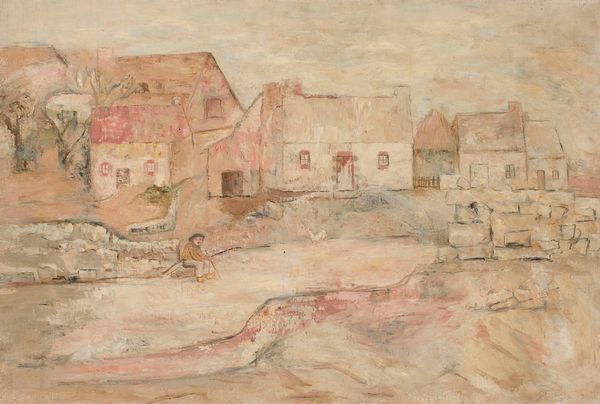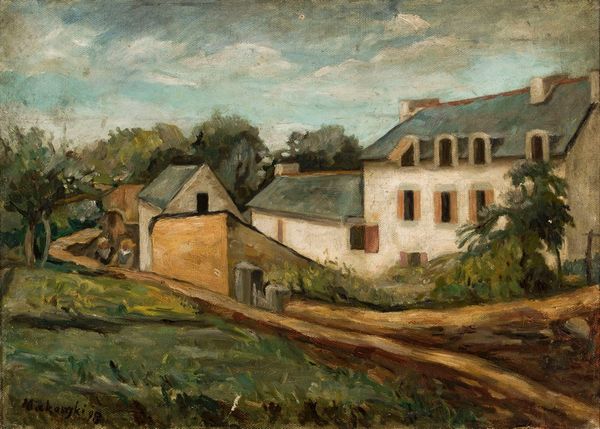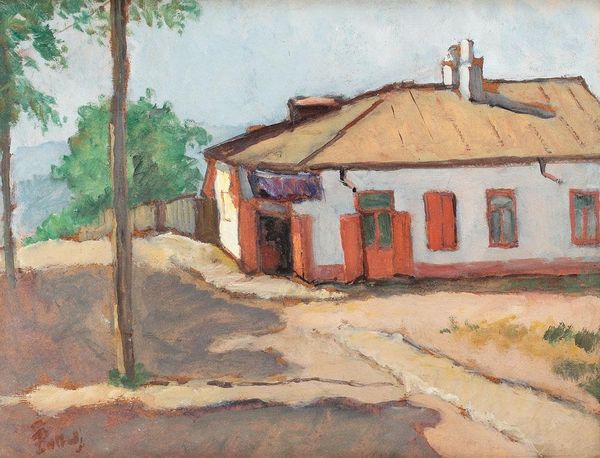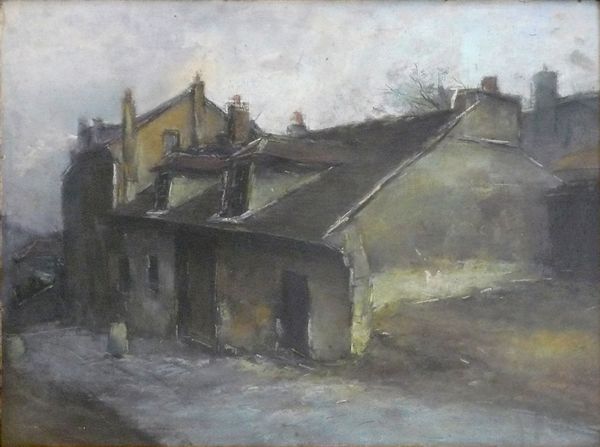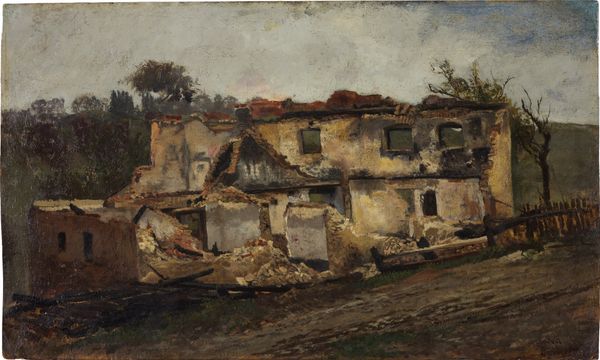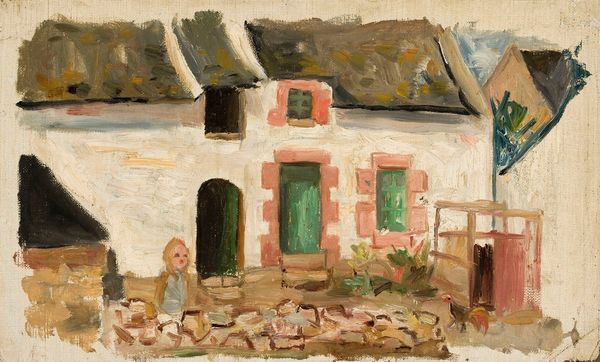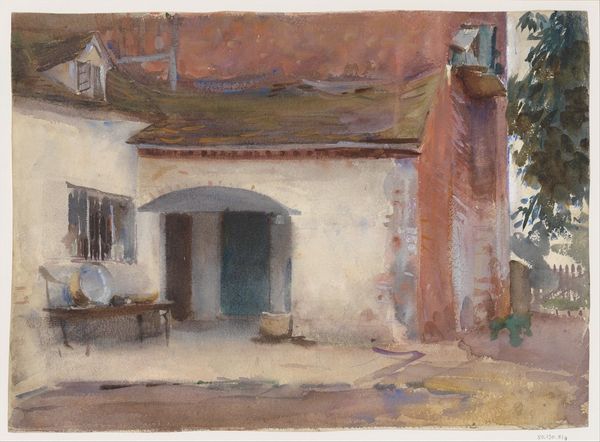
Copyright: Istvan Ilosvai Varga,Fair Use
Curator: Here we have Istvan Ilosvai Varga’s “White Walls,” completed in 1939. He worked ‘en plein air,’ utilizing oil paint to capture this cityscape. Editor: The thick brushstrokes, almost sculptural, give it such an immediate, tactile quality, wouldn't you agree? I’m immediately struck by how solid the forms seem despite the fairly muted palette. Curator: Absolutely. Given the period, leading up to the Second World War, this could be seen as a powerful depiction of societal decay. Look at the architecture, slightly askew, almost crumbling. One can’t ignore the socio-political context. The dilapidated state mirrors broader anxieties about stability and the looming threat of conflict. Editor: Interesting. My initial reaction focused on the underpainting – the ochre tones that peek through lend warmth to what could be austere. It's like a semiotic dance of shadow and light – the white isn't pure, it’s imbued with the history of the painting process itself. Curator: Yes, and think about the "white walls" themselves. Whose walls are these? White is not necessarily a neutral color—it can be deeply implicated in power structures, exclusionary practices… It could speak volumes about class and identity, particularly given the socio-economic upheaval occurring across Europe at the time. Editor: True, but I'm drawn to the formalism within. How Varga balances the composition through line and color, those verticals against the more loosely structured horizontal planes... It’s undeniably skilled. Curator: And there is also that window… almost like an empty frame itself—a void where expectations might lie. Perhaps a deliberate commentary by Varga of the unfulfilled promises of the interwar period? It definitely leaves one with a certain sense of melancholy. Editor: I see your point. Though, in closing, for me, this painting transcends mere historical documentation; the inherent formalism elevates it to an almost philosophical inquiry of being and seeing, itself. Curator: I can agree with that sentiment— it definitely provides multiple avenues for thought. Thank you!
Comments
No comments
Be the first to comment and join the conversation on the ultimate creative platform.

